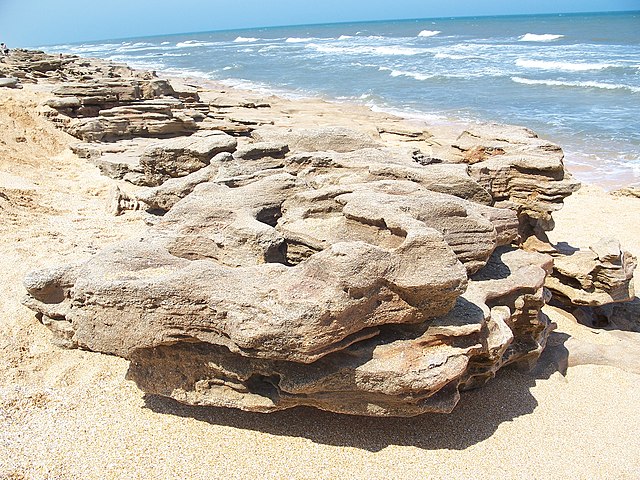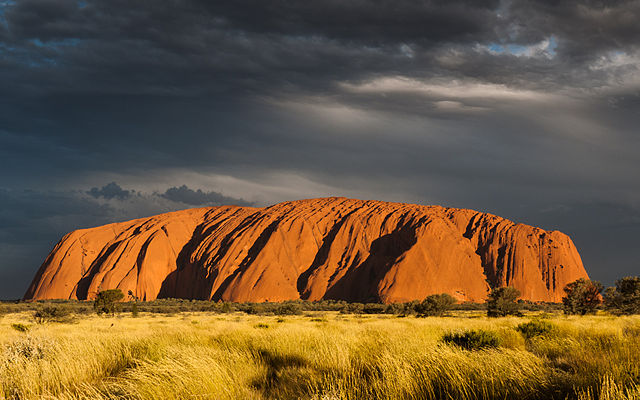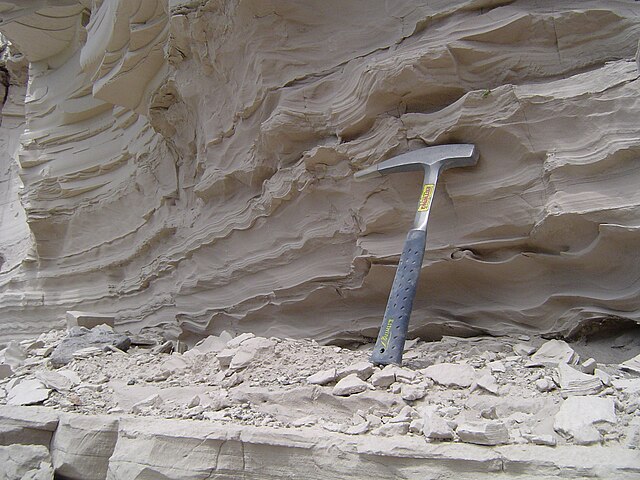Coquina is a sedimentary rock that is composed either wholly or almost entirely of the transported, abraded, and mechanically sorted fragments of mollusks, trilobites, brachiopods, or other invertebrates. The term coquina comes from the Spanish word for "cockle" and "shellfish".
Coquina outcrop on the beach at Washington Oaks State Gardens, Florida
Coquina from Florida
Coquina wall at the Castillo de San Marcos
Close-up of coquina from Florida. The scale bar is 10 mm (0.39 in).
Sedimentary rocks are types of rock that are formed by the accumulation or deposition of mineral or organic particles at Earth's surface, followed by cementation. Sedimentation is the collective name for processes that cause these particles to settle in place. The particles that form a sedimentary rock are called sediment, and may be composed of geological detritus (minerals) or biological detritus. The geological detritus originated from weathering and erosion of existing rocks, or from the solidification of molten lava blobs erupted by volcanoes. The geological detritus is transported to the place of deposition by water, wind, ice or mass movement, which are called agents of denudation. Biological detritus was formed by bodies and parts of dead aquatic organisms, as well as their fecal mass, suspended in water and slowly piling up on the floor of water bodies. Sedimentation may also occur as dissolved minerals precipitate from water solution.

Middle Triassic marginal marine sequence of siltstones (reddish layers at the cliff base) and limestones (brown rocks above), Virgin Formation, southwestern Utah, U.S.
Uluru (Ayers Rock) is a large sandstone formation in Northern Territory, Australia.
Claystone deposited in Glacial Lake Missoula, Montana, United States. Note the very fine and flat bedding, common for deposits coming from lake beds further away from the source of sediment.
Sedimentary rock with sandstone in Malta








